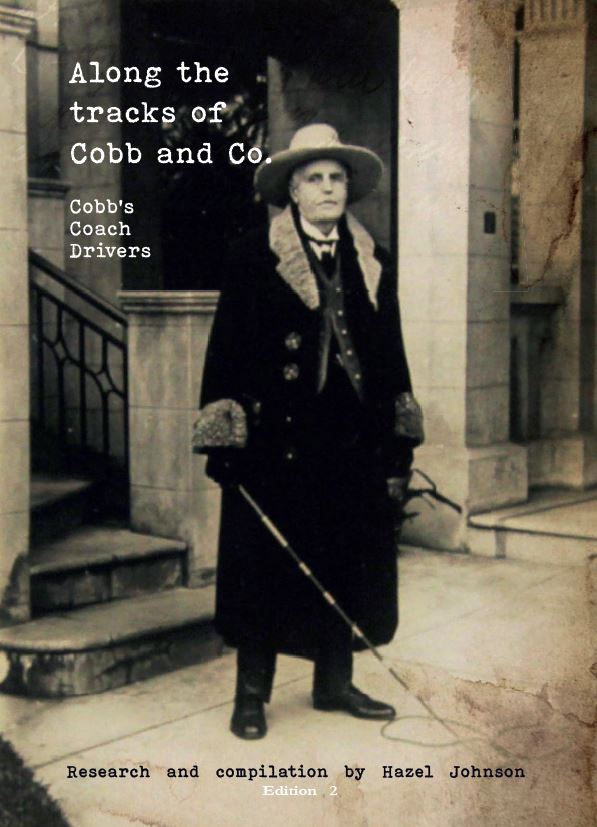Along the tracks of Cobb and Co. - Cobb's Coach Drivers
SKU:
A$32.95
A$32.95
Unavailable
per item
Edition 2 ... 800+ drivers identified ... 70+ historical photos
Saddle up for an unforgettable ride through Australia’s untamed past!
From bushrangers and highway robberies to floods, fire, and thrilling coach accidents, this collection transports you into the roaring days of Cobb and Co., where adventure lurked at every turn. It’s not just about the coaches—it’s about the fearless men (and occasional women) who took the reins, guiding their passengers through treacherous terrain with wit, grit, and an unwavering spirit.
They weren’t merely drivers—they were storytellers, pioneers, and legends in motion. As Cobb and Co.’s first coach departed Melbourne and its last journeyed from Yeulba to Surat, Australia evolved, and these horse-drawn carriages played a crucial role in shaping a growing nation. They didn’t wait for roads, bridges, or crossings—they blazed their own tracks across the wild landscape. Rain, hail, mud, dust, or flood—nothing stopped Cobb’s drivers from completing their ‘stage’.
With over 800 drivers identified across Australia, this book ensures that the legacy of Cobb and Co. doesn’t fade into forgotten history. Recognised for its historical significance, the ‘Along the tracks of Cobb and Co.’ Book Series preserves an era of unyielding determination, fearless driving, and the enduring power of the postal service that bound a nation together.
Step back in time—ride the tracks, relive the adventure, and discover the legends that built Australia!
From bushrangers and highway robberies to floods, fire, and thrilling coach accidents, this collection transports you into the roaring days of Cobb and Co., where adventure lurked at every turn. It’s not just about the coaches—it’s about the fearless men (and occasional women) who took the reins, guiding their passengers through treacherous terrain with wit, grit, and an unwavering spirit.
They weren’t merely drivers—they were storytellers, pioneers, and legends in motion. As Cobb and Co.’s first coach departed Melbourne and its last journeyed from Yeulba to Surat, Australia evolved, and these horse-drawn carriages played a crucial role in shaping a growing nation. They didn’t wait for roads, bridges, or crossings—they blazed their own tracks across the wild landscape. Rain, hail, mud, dust, or flood—nothing stopped Cobb’s drivers from completing their ‘stage’.
With over 800 drivers identified across Australia, this book ensures that the legacy of Cobb and Co. doesn’t fade into forgotten history. Recognised for its historical significance, the ‘Along the tracks of Cobb and Co.’ Book Series preserves an era of unyielding determination, fearless driving, and the enduring power of the postal service that bound a nation together.
Step back in time—ride the tracks, relive the adventure, and discover the legends that built Australia!
Thank you for your support in keeping Australian history alive. By purchasing this book, you are helping to uncover,
preserve, and share the rich tapestry of our nation’s past—ensuring that future generations can learn from it, appreciate it,
and be inspired by the stories that shaped Australia.
Your contribution allows history to speak for itself—authentic, untold, and waiting to be rediscovered.
preserve, and share the rich tapestry of our nation’s past—ensuring that future generations can learn from it, appreciate it,
and be inspired by the stories that shaped Australia.
Your contribution allows history to speak for itself—authentic, untold, and waiting to be rediscovered.
